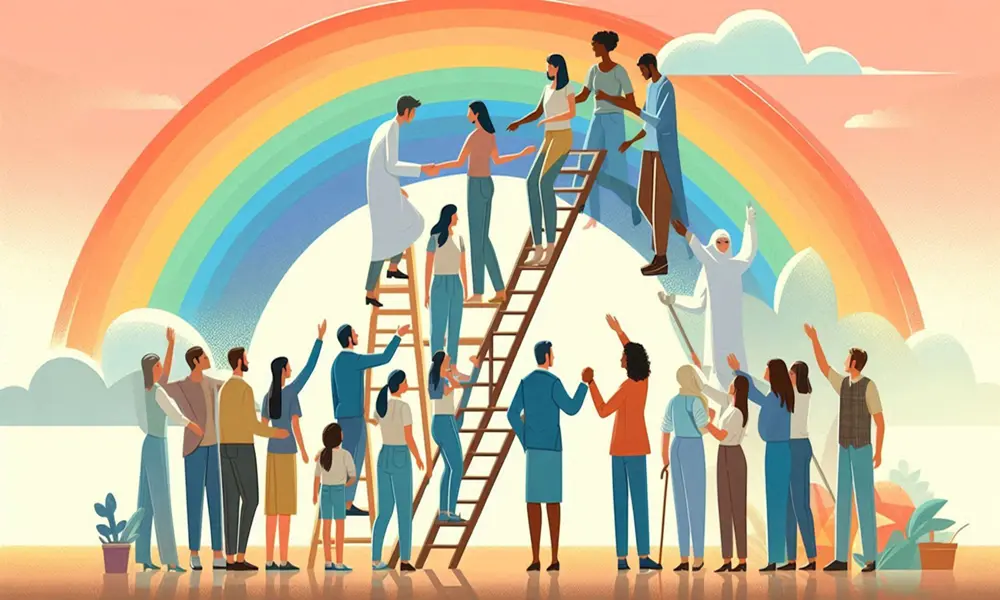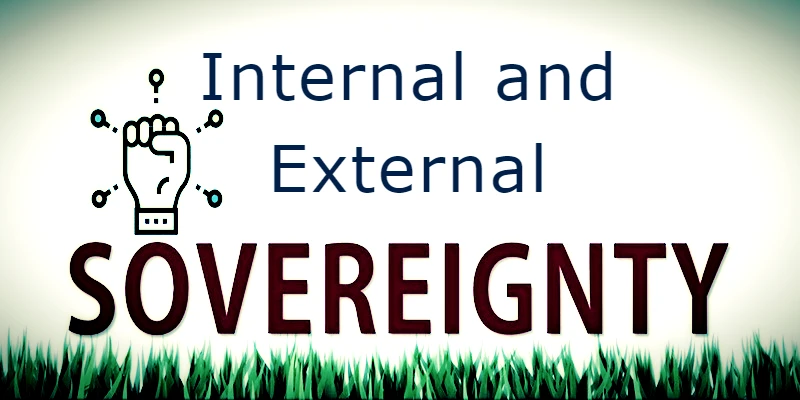Social stratification refers to the hierarchical arrangement of individuals in a society based on various factors such as wealth, income, education, and power. This system inherently creates social inequality, as it leads to an unequal distribution of resources and opportunities. Those at the top of the hierarchy have greater access to valuable resources, while those at the bottom have limited access, perpetuating a cycle of inequality.
In this informative article we will discuss social stratification, historical context, its types, and key features.
What is Social Stratification: Historical Context, Its Types, and Key Characteristics

Definition of Social Stratification
Social stratification refers to the hierarchical arrangement of individuals within a society based on various factors such as wealth, income, education, race, ethnicity, gender, occupation, and social status. This system of ranking creates distinct social layers, where individuals and groups have unequal access to resources, opportunities, and privileges. The concept of social stratification is fundamental to understanding how societies organize themselves and how social inequalities are perpetuated.
In many societies, social stratification manifests through different systems such as class, caste, slavery, and meritocracy. These systems illustrate the various ways in which societies structure social hierarchies and the implications for individuals within those societies.
Origins of Social Stratification
Social stratification has its origins in the earliest human societies. In hunting and gathering societies, there was little stratification as survival depended on the collective effort of all members. Men typically hunted while women gathered, and resources were shared relatively equally among the group. This egalitarian structure ensured that no single group had significantly more power or resources than another.
With the advent of horticultural and pastoral societies, social stratification began to emerge. These societies had more reliable food sources, allowing some members to engage in activities other than food production. This led to the accumulation of surplus resources and the development of social hierarchies. Those who controlled the surplus, such as landowners and chiefs, gained more power and prestige, creating a division between the elite and the common people.
The rise of agricultural societies further intensified social stratification. The ability to produce and store large quantities of food allowed for the development of complex societies with specialized roles. This period saw the emergence of distinct social classes, with landowners and rulers at the top, followed by artisans, traders, and laborers. The division of labor and the accumulation of wealth and resources by a few individuals or families led to significant inequalities.
Industrialization in the 18th and 19th centuries brought about new forms of social stratification. The Industrial Revolution created a capitalist economy where factory owners and industrialists amassed great wealth, while workers faced harsh conditions and low wages. This period saw the rise of the bourgeoisie, who owned the means of production, and the proletariat, who sold their labor. The stark contrast between these classes highlighted the growing economic and social inequalities, which continue to shape modern societies.
Historical Context
Social stratification has deep historical roots, dating back to ancient civilizations. In ancient Egypt, society was structured like a pyramid, with the Pharaoh at the top, followed by priests, soldiers, artisans, and farmers, and slaves at the bottom. This hierarchical system was mirrored in other ancient societies, such as Rome, where patricians held power over plebeians and slaves. These early forms of social stratification were based on roles and contributions to society, which over time became more rigid and formalized into distinct social classes and castes.
During the medieval period, feudalism became the dominant social structure in Europe. The feudal system was characterized by a strict hierarchy, with kings and nobles at the top, followed by knights, vassals, and serfs. This system was based on land ownership and the obligations between lords and their vassals. The rigid class distinctions in feudal society were reinforced by the Church, which played a significant role in maintaining the social order. Similar hierarchical structures existed in other parts of the world, such as the caste system in India, which divided society into rigid hereditary groups.
The rise of industrialization in the 19th century brought significant changes to social stratification. The Industrial Revolution created a new class of wealthy industrialists and a large working class, leading to significant economic and social inequalities. This period also saw the emergence of sociological theories that sought to understand and explain the dynamics of social stratification, such as Karl Marx’s theory of class struggle and Max Weber’s analysis of class, status, and power. These theories highlighted the growing divide between the bourgeoisie, who owned the means of production, and the proletariat, who sold their labor.
In the 20th century, social stratification continued to evolve with the rise of the welfare state and the expansion of education and social services. Despite these advancements, significant inequalities persisted, particularly along lines of race, gender, and ethnicity. Contemporary sociologists continue to study social stratification to understand its impact on individuals and societies and to explore ways to address and reduce social inequalities. The historical context of social stratification provides valuable insights into the enduring nature of social hierarchies and the ongoing struggle for equality and justice.
Types of Stratification Systems
Slavery: Slavery is the most closed system of stratification, where individuals are owned by others as property. Historically, slavery has existed in many societies, including ancient Greece, Rome, and the Americas. Slaves had no personal freedom or rights and were subjected to harsh conditions and forced labor. Despite its official abolition in most parts of the world, modern forms of slavery, such as human trafficking and forced labor, still persist.
Caste System: The caste system is another closed stratification system, most notably practiced in India. In this system, social status is inherited and fixed at birth, with little to no opportunity for mobility. The caste system divides people into hierarchical groups based on their occupation and family lineage. Each caste has specific duties and privileges, and inter-caste interactions are often restricted. Although legally abolished, the caste system’s social and cultural impacts remain significant in some regions.
Estate System: The estate system, prevalent in feudal societies, is characterized by a rigid hierarchy based on land ownership and duty. Society is divided into three main estates: the nobility, the clergy, and the commoners. The nobility owned vast lands and had significant power, while the clergy held religious authority. Commoners, including peasants and serfs, worked the land and had limited rights. Mobility between estates was rare, and one’s estate determined their social status and opportunities.
Class System: The class system is a more open form of stratification, where social mobility is possible based on individual achievement. In class systems, people are grouped based on economic factors such as income, wealth, and occupation. Unlike caste or estate systems, individuals can move up or down the social ladder through education, employment, and other means. However, significant inequalities still exist, and factors like family background and social connections can influence one’s class position.
Meritocracy: Meritocracy is an idealized system where individuals are rewarded based on their abilities and achievements. In a meritocratic society, factors such as talent, effort, and education determine one’s social status. While no society is a perfect meritocracy, some strive to reduce inequalities by promoting equal opportunities and rewarding merit. Critics argue that meritocracy can still perpetuate inequalities, as access to resources and opportunities is often influenced by existing social structures.
Characteristics of Social Stratification

Here are some key features of social stratification:
Hierarchical Structure: Social stratification organizes society into hierarchical layers based on factors such as wealth, income, education, and power. This hierarchy determines individuals’ access to resources and opportunities, creating distinct social classes. Those at the top have greater access to valuable resources, while those at the bottom have limited access.
Social Inequality: A fundamental feature of social stratification is the unequal distribution of resources and privileges. This inequality is evident in various aspects of life, including education, healthcare, and employment. The disparities in access to these resources perpetuate social inequalities and affect individuals’ quality of life.
Social Mobility: Social stratification systems vary in their degree of openness, which affects social mobility. In open systems, individuals can move up or down the social hierarchy based on their achievements and efforts. In contrast, closed systems, such as caste systems, offer little to no mobility, as social positions are largely hereditary.
Intersectionality: Social stratification is influenced by multiple dimensions, including race, gender, ethnicity, and sexuality. Intersectionality examines how these overlapping identities impact individuals’ social standing and experiences of inequality. For example, a person may face compounded disadvantages due to their race and gender.
Institutional Processes: Social stratification is maintained through institutional processes that define and allocate valuable resources. These processes include laws, policies, and social norms that reinforce the existing social hierarchy. Institutions such as education, government, and the economy play a crucial role in perpetuating social stratification.
Cultural Beliefs and Ideologies: Cultural beliefs and ideologies play a significant role in justifying and maintaining social stratification. These beliefs often promote the idea that social hierarchies are natural or deserved, which can discourage efforts to challenge or change the status quo. For instance, the belief in meritocracy suggests that individuals succeed based on their abilities and efforts, ignoring structural inequalities.
Impact on Life Chances: Social stratification significantly impacts individuals’ life chances, including their health, education, and employment opportunities. Those in higher social strata generally have better access to quality healthcare, education, and lucrative job opportunities, while those in lower strata face numerous barriers.
Resistance and Change: Throughout history, there have been movements and efforts to challenge and change existing social stratification systems. Social movements, revolutions, and policy reforms have aimed to reduce inequalities and promote greater social mobility and justice.
What is Global Stratification: Explained
Social stratification is not limited to individual societies but extends globally. Global stratification refers to the hierarchical arrangement of countries and their populations based on wealth, power, and access to resources. This stratification creates significant disparities in living standards, rights, and opportunities among different nations.
High-income countries, such as those in North America and Western Europe, enjoy advanced infrastructure, high levels of education, and robust healthcare systems. In contrast, low-income countries, primarily in Sub-Saharan Africa and parts of Asia, struggle with poverty, limited access to education, and inadequate healthcare.
The historical roots of global stratification can be traced back to colonialism and imperialism. European powers colonized vast regions of Africa, Asia, and the Americas, exploiting their resources and establishing economic dominance. This exploitation created a legacy of economic dependency and underdevelopment in many former colonies. Even after gaining independence, these countries often faced challenges in building stable economies and infrastructures, perpetuating their lower status in the global hierarchy.
Economic globalization has further entrenched global stratification. Multinational corporations, primarily based in high-income countries, dominate global markets and often exploit labor and resources in low-income countries.
This dynamic reinforces economic inequalities, as profits are concentrated in wealthy nations while poorer countries remain dependent on low-wage labor and raw material exports. Trade policies and international financial institutions, such as the World Bank and the International Monetary Fund, also play a role in maintaining these disparities by imposing conditions that often benefit wealthy nations.
Efforts to address global stratification include international aid, development programs, and policies aimed at reducing poverty and promoting sustainable development. However, these efforts are often hampered by political, economic, and social challenges.
Corruption, political instability, and inadequate infrastructure in low-income countries can limit the effectiveness of aid and development initiatives. Additionally, the global economic system’s inherent inequalities make it difficult to achieve significant and lasting change.
Author: Mahtab Alam Quddusi
Read Here: The Impact of Social Stratification on Society



